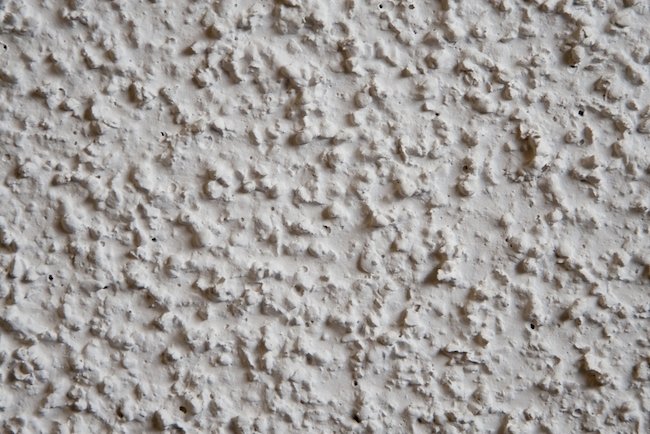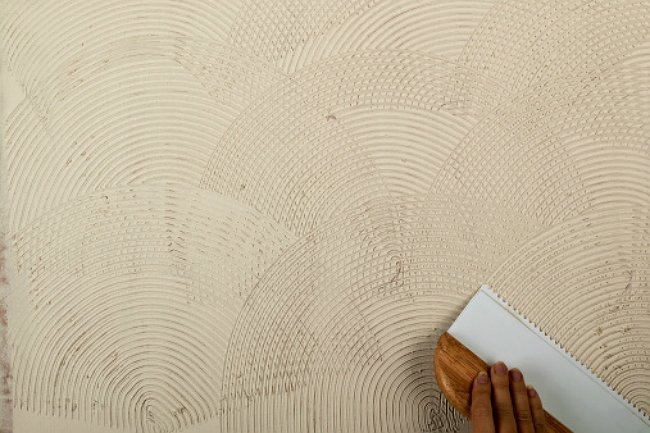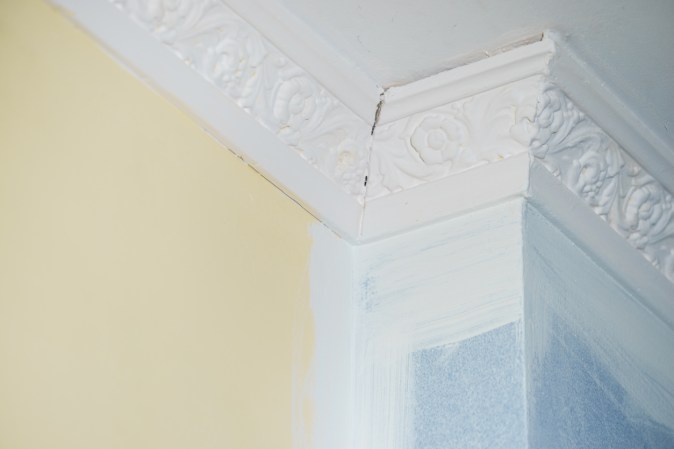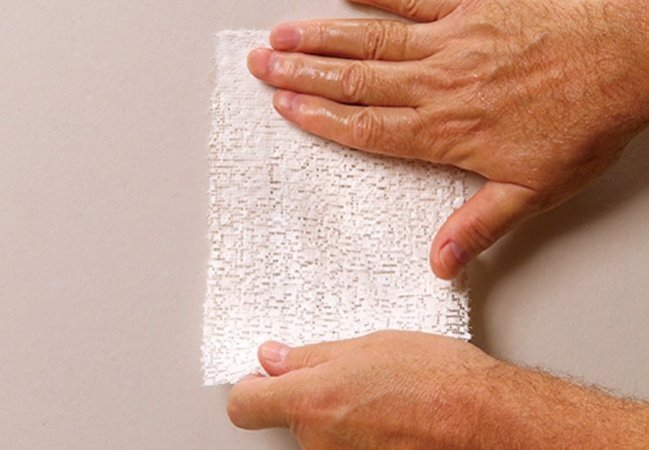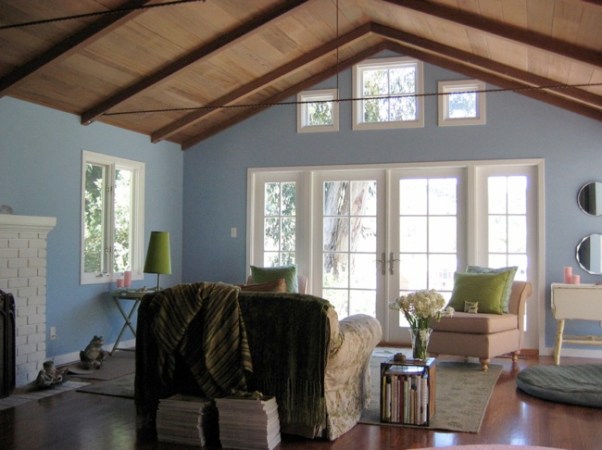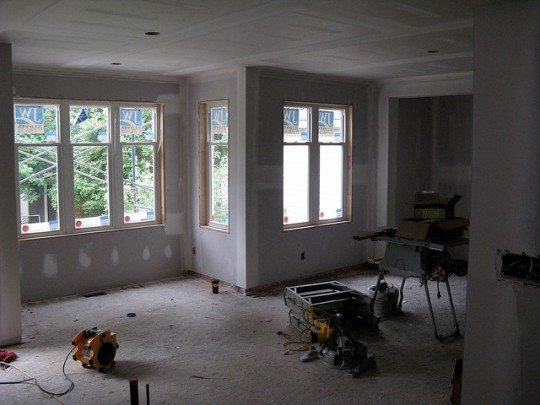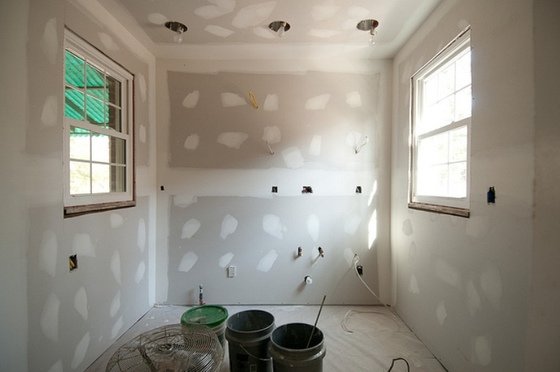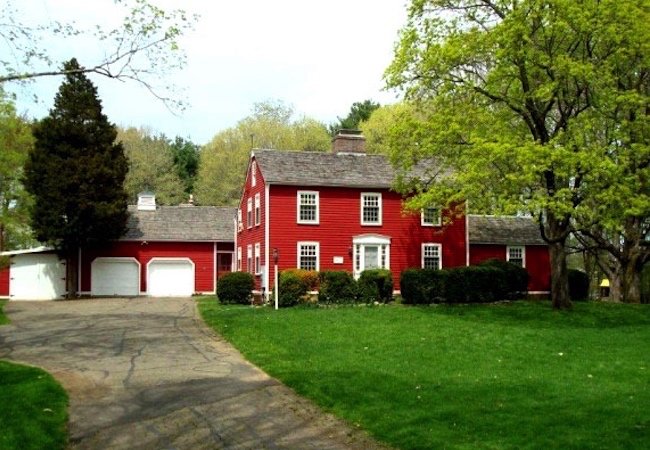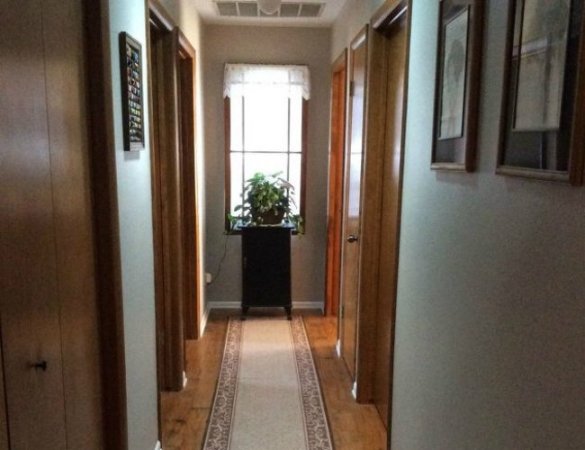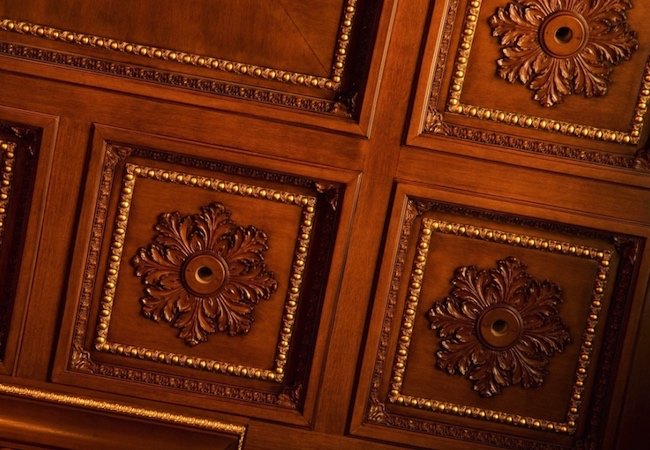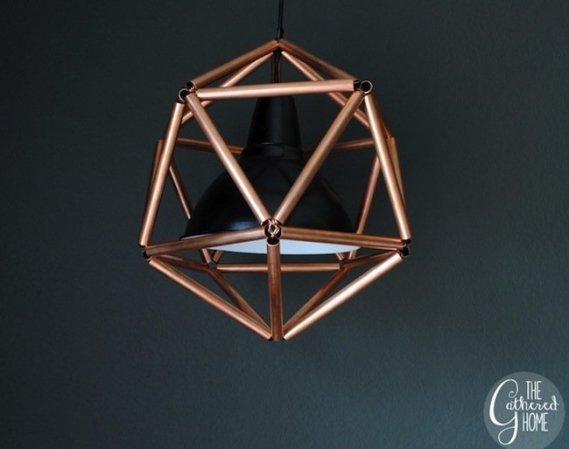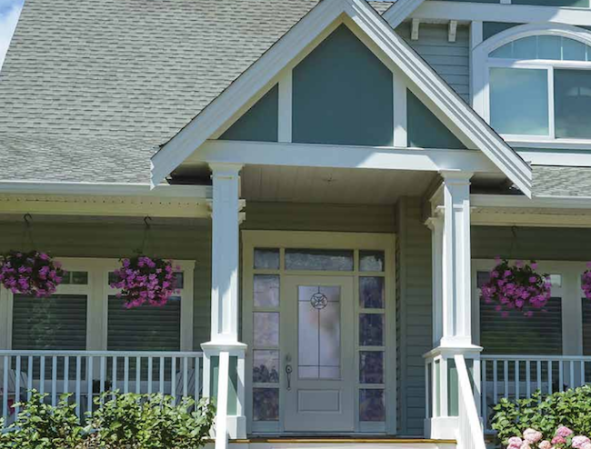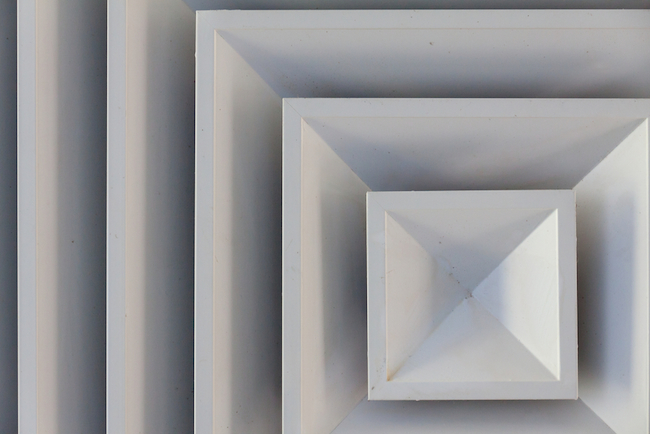We may earn revenue from the products available on this page and participate in affiliate programs. Learn More ›
Half a century ago, popcorn ceilings were all the rage, cropping up above brightly colored walls, psychedelic patterns, and shiny furniture. Less expensive than traditional hand-troweled plaster, the sprayed-on technique—which actually resembles cottage cheese more than popcorn—camouflaged ceiling imperfections, offered a measure of fire-resistance, and provided noise-dampening benefits. These days, the speckled ceiling design tends to date a room’s style. Fortunately, whether you want to get rid of a popcorn ceiling altogether or bring new life to the retro look, you’ve got options.
Understand the Asbestos Issue
First thing’s first: Before attempting any sort of project on an existing popcorn ceiling, a homeowner should determine whether its material makeup may pose a health risk. Asbestos, a naturally occurring fibrous silicate mineral, was the material of choice for popcorn ceilings until the substance was banned as a health hazard in 1978. Manufacturers switched to paper fiber that year, but suppliers continued to sell existing stores of asbestos-laced material. That means that popcorn ceilings installed as late as the mid-’80s could contain asbestos, and, when disturbed, disperse microscopic fibrils known to cause lung-scarring illnesses and even lung cancer if inhaled.
You can test a popcorn ceiling for the presence of asbestos by carefully scraping a small sample into a plastic bag and having it tested at an EPA-accredited lab. While homeowners are allowed to remove a popcorn ceiling that contains the material, a professional asbestos remediation company should do the job. Contact your local waste authority before having asbestos removed to determine the best (and legal) way to dispose of it.
Patching Popcorn Ceilings
A popcorn ceiling damaged by unsightly stains or cracks can be patched, but obtaining an exact match of the original texture and ceiling color can be challenging. Popcorn ceiling patch products are available in spray-on aerosol cans or in premixed containers for application with a brush. Thinned drywall compound, which is commonly used to texture new ceilings today, is not recommended for patching popcorn ceiling texture since it contains water, which can cause the existing popcorn texture to come off.
Painting Popcorn Ceilings
As long as the texture isn’t sagging, flaking, or shedding, a popcorn ceiling can simply be painted to update the look. Begin by brushing off all dust with a super-soft-bristle brush attached to an extension pole. Then apply stain blocking ceiling primer to prevent stains and water spots from bleeding through. When dry, use a thick nap roller or a paint sprayer to apply paint, remembering to get an ample supply to fill all the nooks and crannies.
Hiding Popcorn Ceilings
You can hide a popcorn ceiling by installing rigid foam ceiling tiles, drywall panels, or even wood planking right over the existing texture. Feather-light decorative foam ceiling panels can be installed with adhesive, while drywall and wood must be attached to the ceiling joists with nails or screws. For high ceilings more than 8 feet from the floor, you might want to consider installing a drop ceiling, which involves mounting a metal grid that holds individual ceiling panels a few inches below the existing ceiling.
Removing Popcorn Ceilings
Unpainted popcorn ceilings are not necessarily difficult to remove, but the process is messy and time-consuming. After spraying the ceiling with water to saturate the texture, which causes it to release, it’s simply a matter of scraping it away with a large putty knife or taping trowel.
If a popcorn ceiling has been painted, water won’t saturate the texture beneath; you’ll need to apply a stripping product. You can find stripping solutions specifically designed to remove painted popcorn ceilings at your local home improvement center or online (view example on Amazon). These solutions, which often come in gel form to reduce drips, can be rolled or brushed on. After giving the solution adequate time to soften the paint and texture, you’ll proceed to scrape both away with a wide trowel.
This tends to be a nasty, dirty, potentially dangerous task, so gear up appropriately: Wear a facemask, eye protection, and old clothing that you can dispose of when the job is done. Keep the texture constantly wet to prevent the distribution of fibers, which can present a health risk if inhaled.
Give Your Ceiling New Popcorn Pizzazz
Homeowners intent on hiding ceiling imperfections with subtle popcorn texture are in luck: Today’s popcorn ceilings are asbestos-free and easy to apply with a hopper gun (view example on Amazon), often available for rent at lumberyards and home centers. It comes in dry powder form and is mixed with water per package instructions. To protect from overspray, remove furnishings, drape walls in plastic sheeting, and use a drop cloth on the floor. Popcorn texture comes in standard ceiling-white and, for a uniform look, it’s a good idea to prime the ceiling before spraying it on. The texture is also paintable, so if you want a color other than ceiling-white, plan on painting over the texture after it dries.


